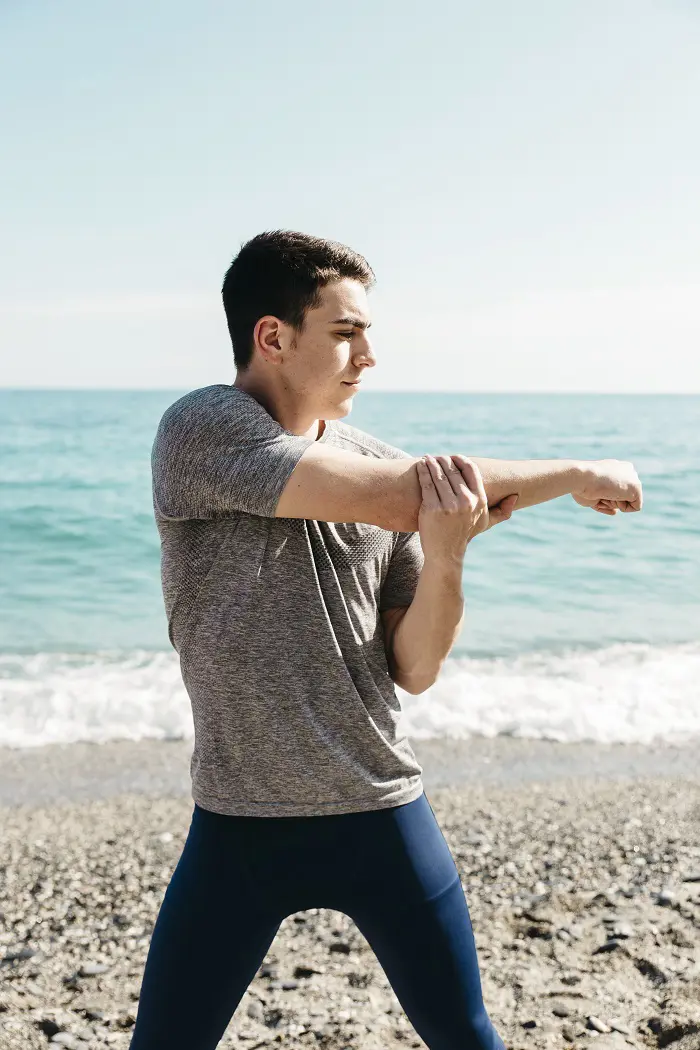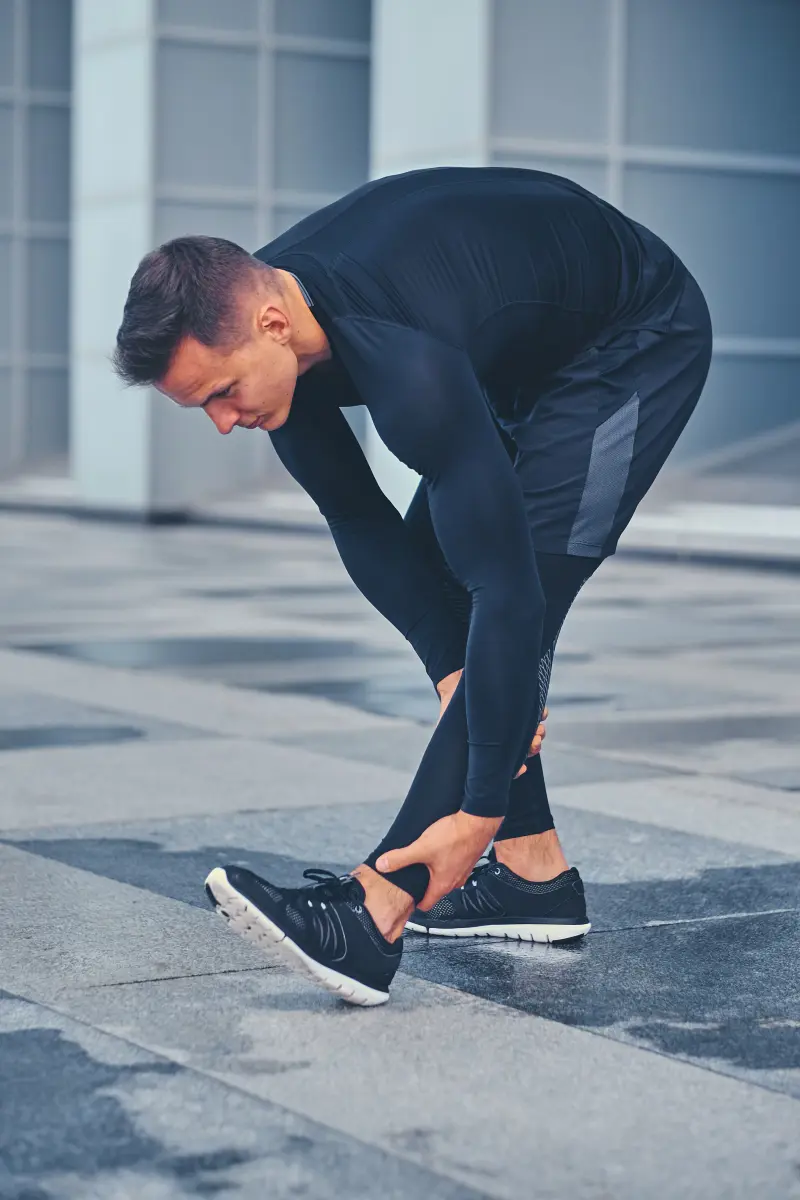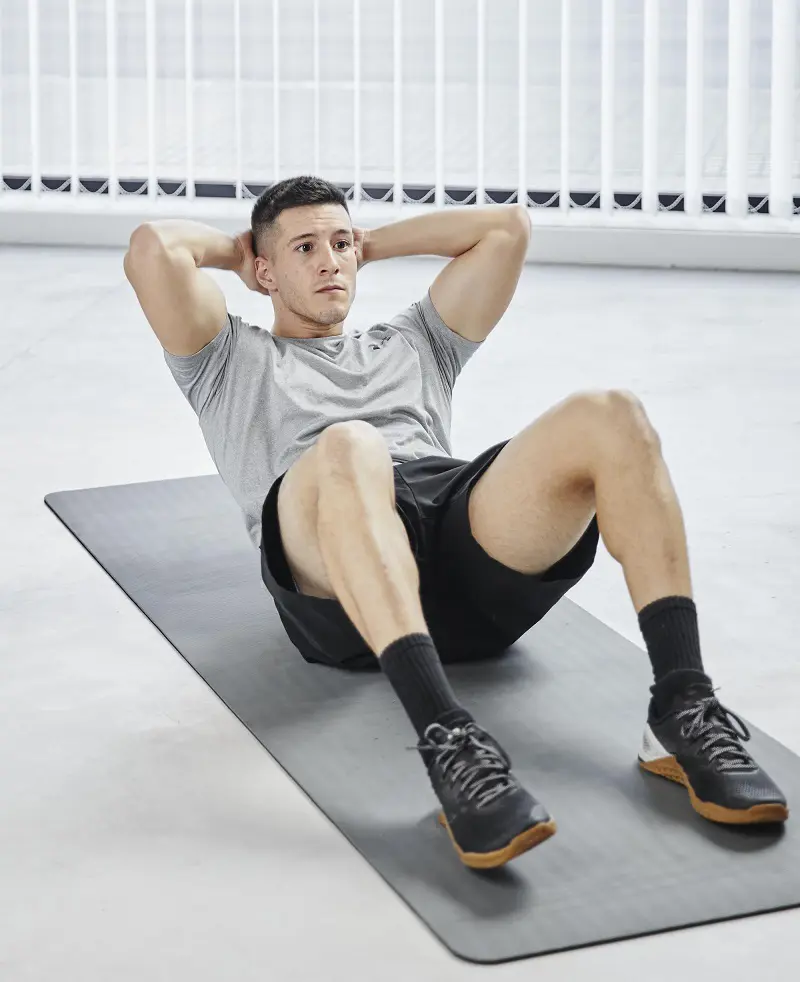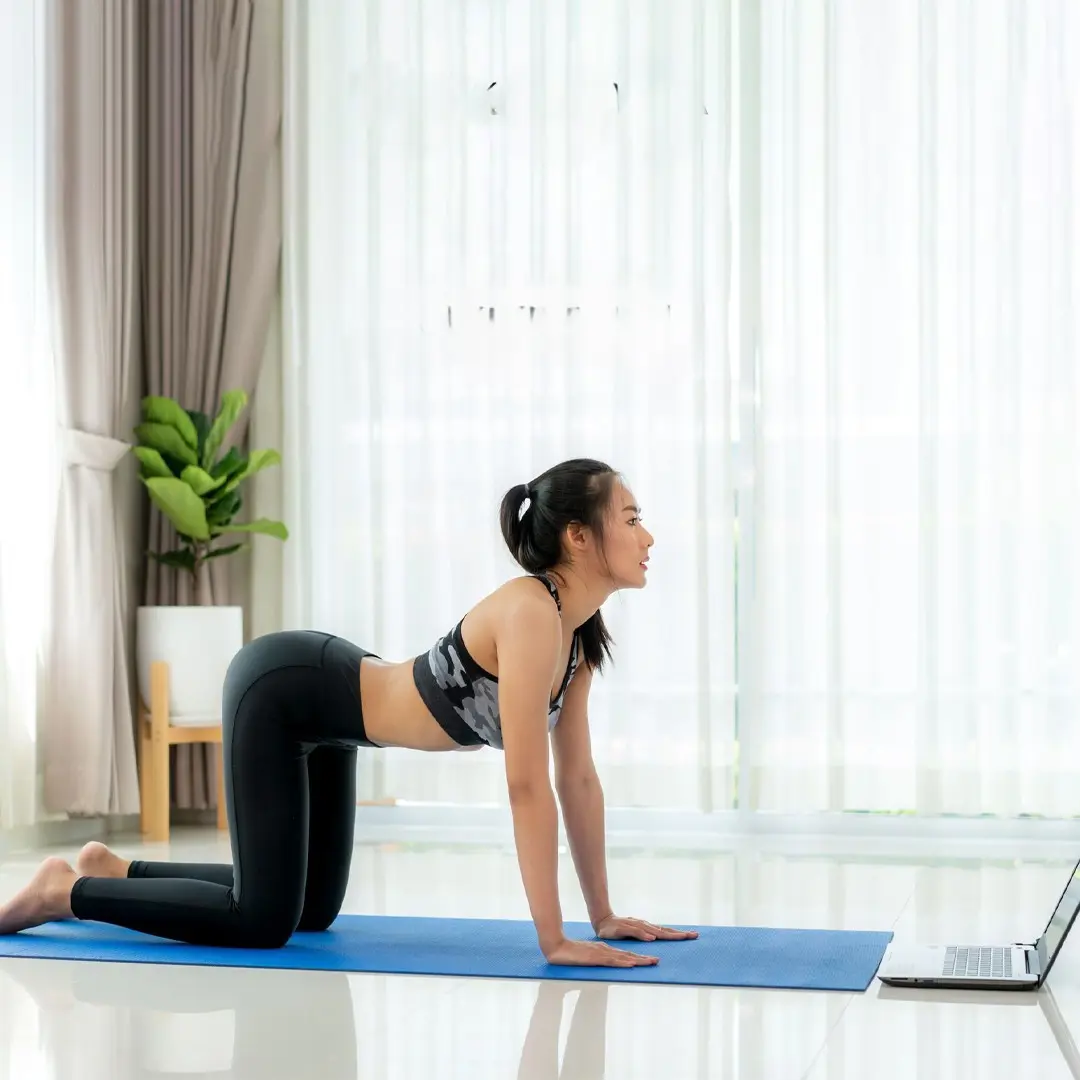Dynamic Stretching: Benefits And Stretches Exercises To Try
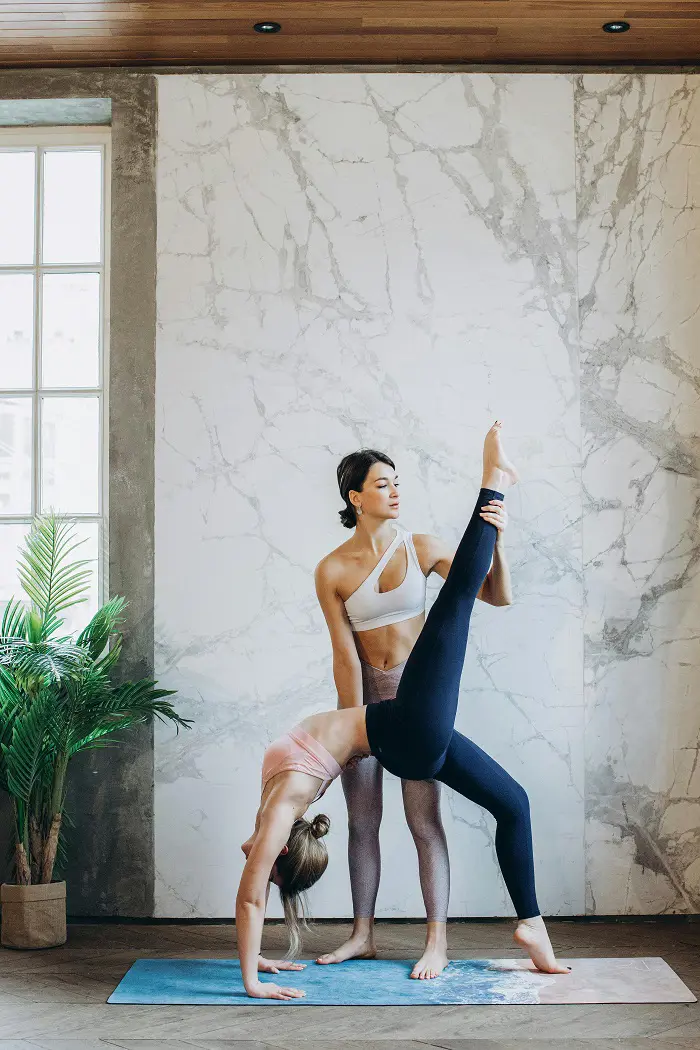
If you are wondering why your energy level and performance are degrading while performing any task despite your good health, maybe you are unaware of dynamic stretching. Dynamic workout exercises have been proven effective in reviving your strength and energy.
We have come up with this guide, especially for worried souls like yours to help you gain enough confidence and strength. Let's uncover 9 effective dynamic stretching exercises to incorporate into your fitness routine.
Dynamic Stretches To Try
Dynamic stretching is based on active movements of the body. Performing dynamic exercises has been found to stretch the muscles and joints to their full range of motion, increasing an individual's power, sprint, jump, and overall performance.
You can try several dynamic workout exercises for healthy and functioning body parts. If you add these stretches to your warm-up routine before carrying out any heavy exercise or participating in any sports, you will certainly be rewarded with improved performance.
1. Walking Lunges
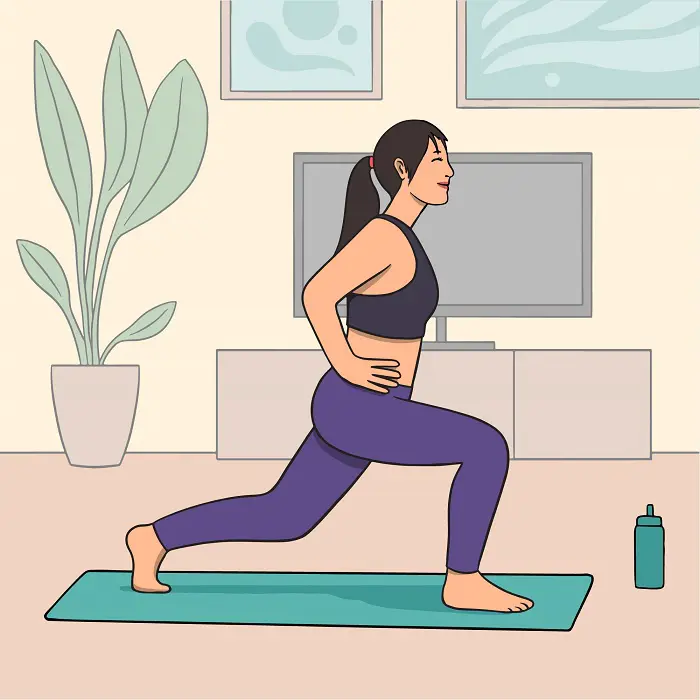
Walking lunges is an effective lunge exercise that helps to strengthen the leg muscles. The muscles like gluteus maximus, hamstrings, quadriceps, and gastrocnemius/soleus (calves) are found to get worked on while doing walking lunges.
How To Do It:
- Stand on your feet with your hands on the waist.
- Step forward with one leg and lunge down, make sure to keep your knee in line with the hip and ankle.
- Lower the back knee toward the ground without touching it down.
- Make sure your front knee doesn't pass your front toes.
- Step forward to return to a standing position and repeat the process with the opposite leg.
- Make sure to carry out this stretch about 10 times.
2. Arm Circles
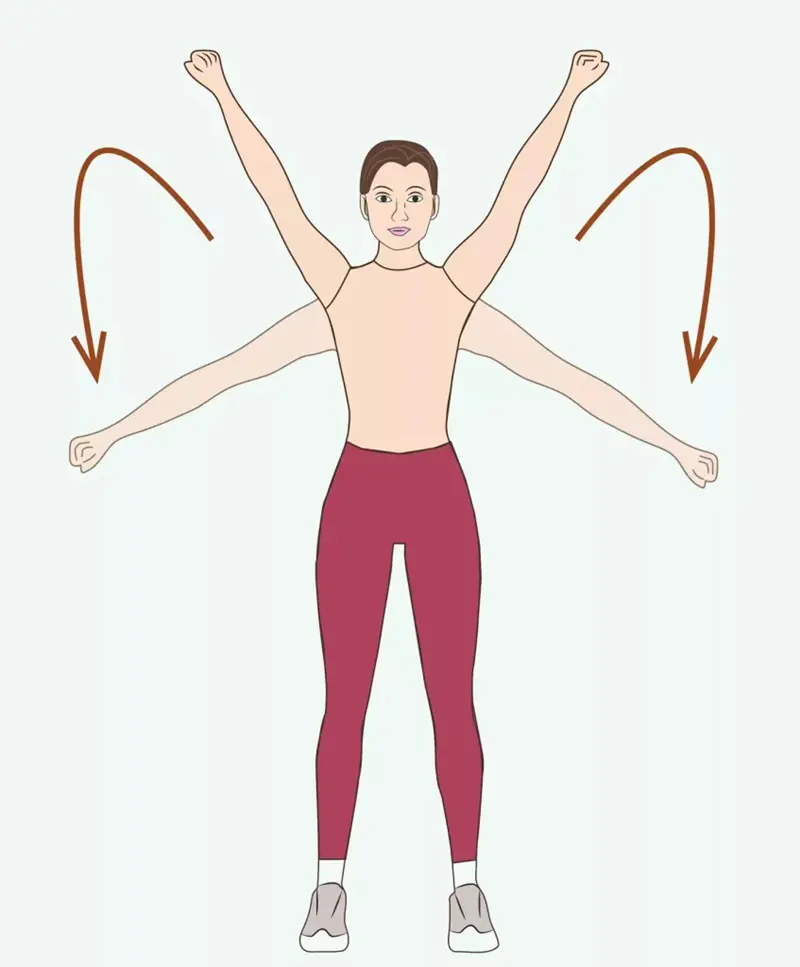
While performing the arm circles, you are working on the muscles of your shoulder and arm, especially the biceps and triceps. Your shoulder muscles, joints, and upper back muscles are warmed up and worked on pretty well.
In addition to that, arm circles are found to work on your arms, chest, and back arm regardless of your level of fitness. If you perform this upper body dynamic stretch effectively, it may help to reduce the fat that has built up in your arms.
How To Do It:
- Keep your body still.
- Slowly lift your one arm and make a circle of it both forward and backward.
- Repeat the process with another arm alone and then repeat with both arms at the same time.
- Try circling both arms in the opposite direction at the same time.
- Repeat the process for about 5-10 times.
3. Side Bend
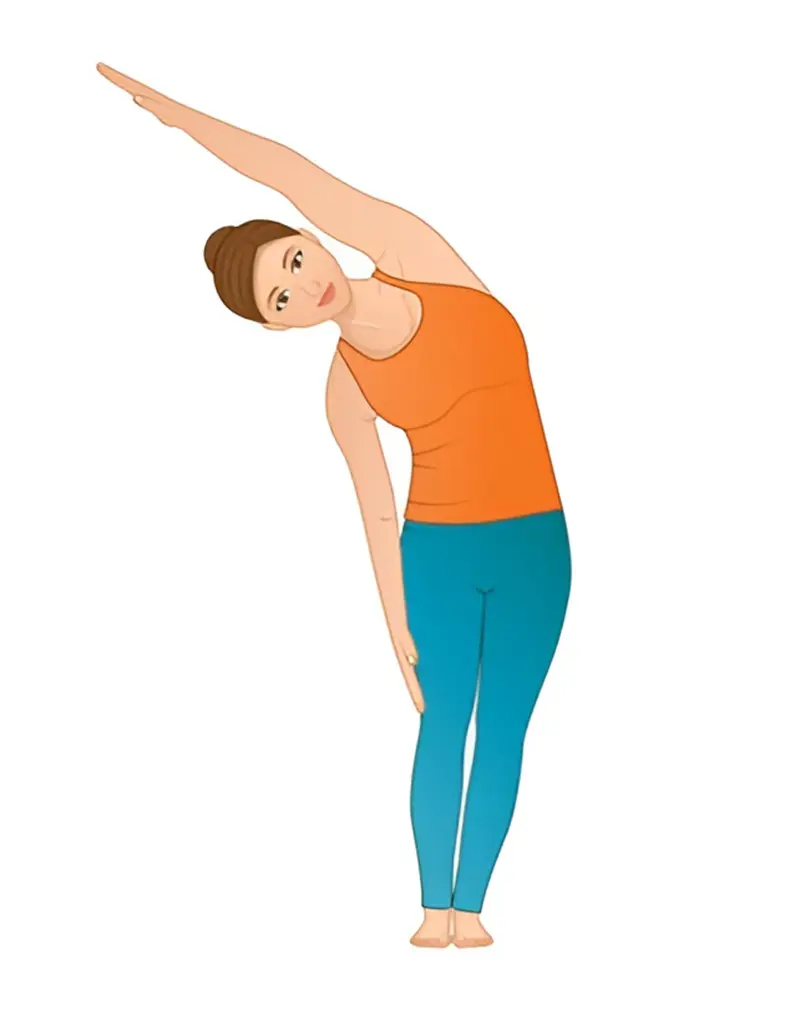
The side bend stretch has been found to stretch and strengthen the intercostal muscles of your body. In addition to that, the internal and external obliques are also stretched by the side bend.
Moreover, if performed regularly, side bends can influence the six-pack muscles, known as rectus abdominis.
How To Do It:
- Stand on your feet that are slightly wider than your shoulder width.
- Place your hand on your hips and slightly bend your knees.
- From the waist, slowly bend to one side at first, and then on the other.
- Make sure you stand straight in a vertical position while stretching side by side.
4. Neck Rotation
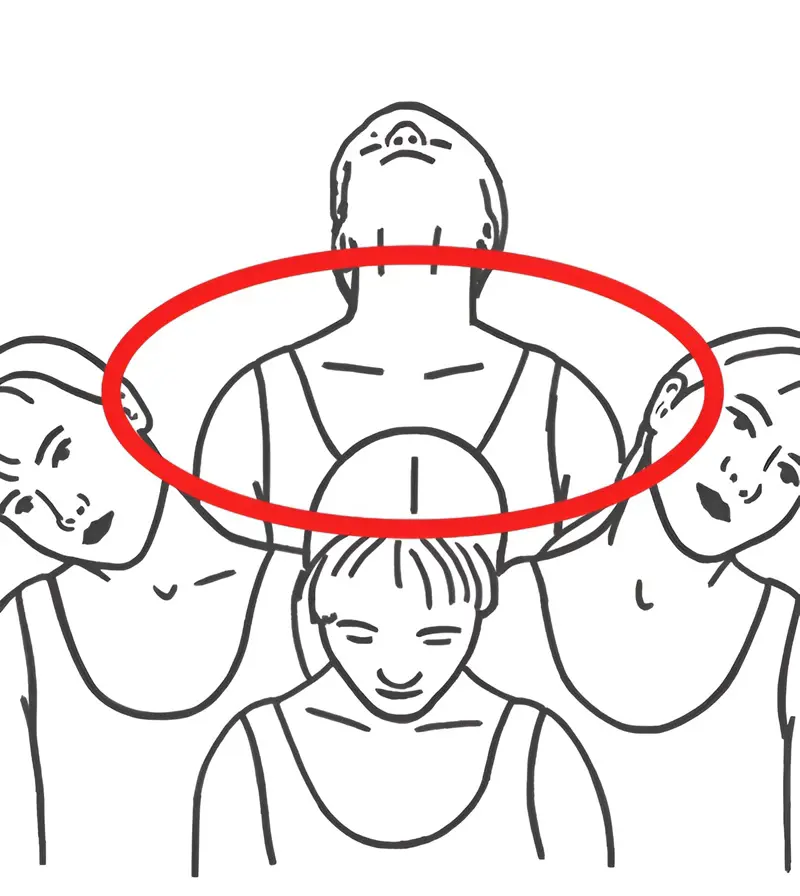
Neck rotation is a gentle exercise involving the neck muscles, primarily the sternocleidomastoid and trapezius. Besides that, this stretch is also found to work on the scalene muscles of the sides of your neck. Particularly for the older adults, the neck rotation helps to improve the posture.
How To Do It:
- Keep your shoulders relaxed.
- Lower your chin and drop it to the chest.
- Make sure to slowly rotate the neck towards the left shoulder, and back to the center.
- Apply the same steps while rotating towards the right shoulder.
- Repeat neck rotation for at least 5-10 times.
5. Torso Twist
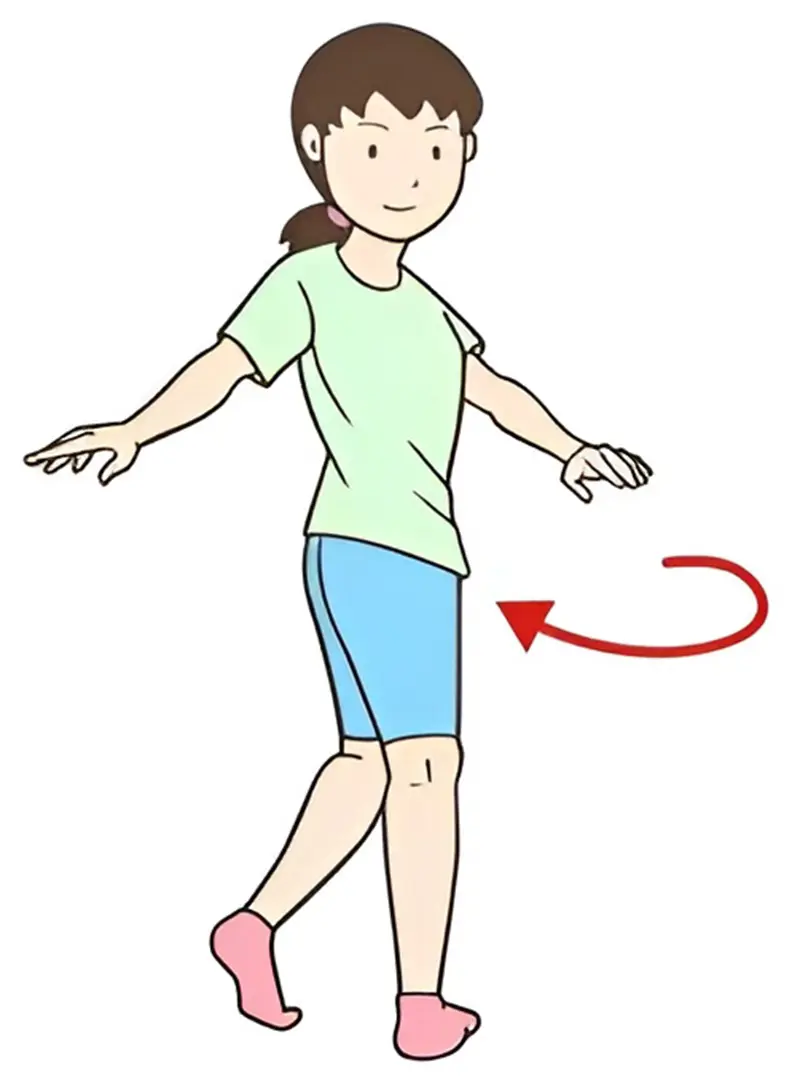
Apart from specific arm and leg muscles, the internal and external abdominal obliques of your trunk that are responsible for bending and rotating your body are also worked by the torso twist. This exercise is also found to warm up your core and helps to keep your spine mobile and flexible.
How To Do It:
- Stand on your feet keeping it as wide as your shoulder.
- Place your hands on your hips or hold them by your sides with your elbows bent at 90 degrees.
- Twist the arms from side to side, rotating your upper body from the hips.
- Carry out twisting from side to side for about 15-20 seconds on each side.
6. Squats
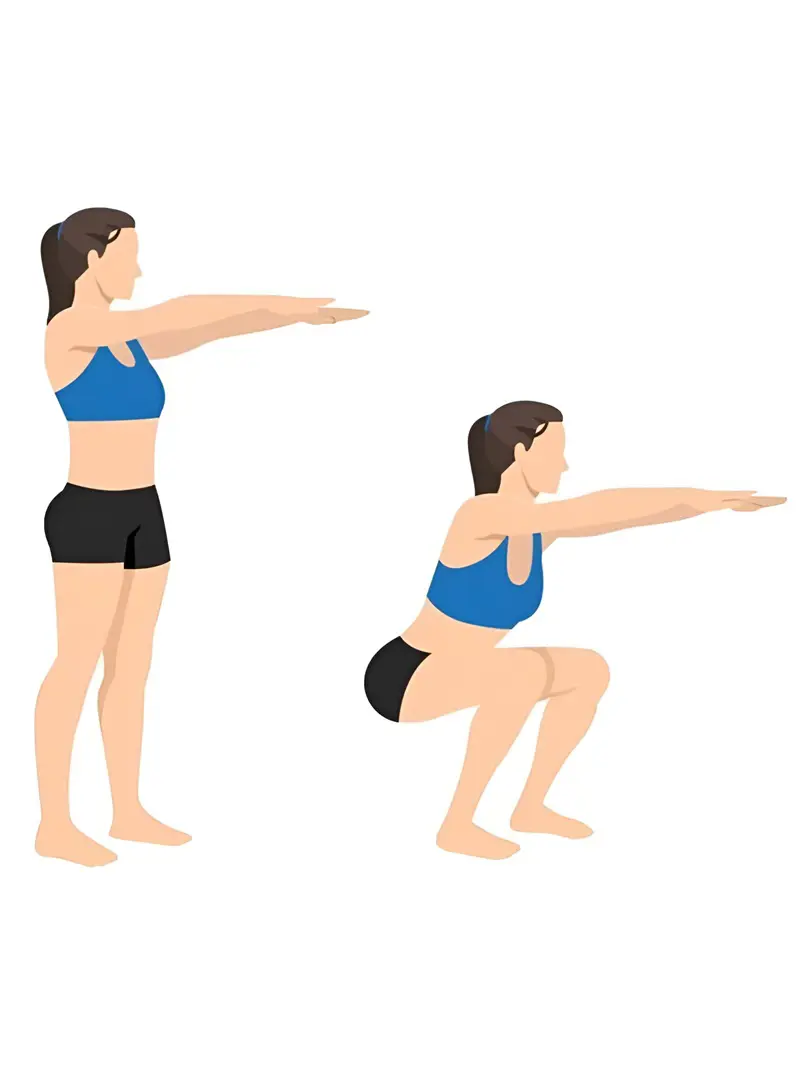
Squats can work most of your muscles, primarily the lower muscles of the body such as the hip muscles, hamstrings, and calves. Besides that, squats also target the core muscles such as the obliques and abdomen.
How To Do It:
- Stand on your feet making the width that of your hip.
- Keep your hands straight out at shoulder height in front of you or clasp together in front of your chest.
- Gently lower your body into a squatting position.
- Make sure the knees do not pass the toe level.
- Stand back up, making sure you squeeze the glutes which are the muscles of your buttocks.
- Repeat the process for about 10-30 times.
7. Hip Circles

Hip circle is a common dynamic stretching exercise. The major targeted muscles of your body are gluteus maximus, gluteus medius, and hip flexors. If you carry out this exercise properly and regularly, it can help you to strengthen the core and improve balance.
How To Do It:
- Stand tall on your legs.
- Gently swing your hips in small circles to the side and down to the ground.
- It is suggested to perform around 10 to 12 circles before switching to the other direction.
- You can work on making larger circles if you feel comfortable.
8. Ankle Rotations

Ankle muscles are primarily affected by the ankle rotation exercise. In addition to that, the muscles of the calves and feet are also worked on effectively. This simple workout helps to improve your flexibility and warms up your feet, calves, and ankles.
How To Do It:
- Stand upright on your feet, making the width as much as your hip.
- Keep your arms by your sides.
- Slowly shift your weight to the right leg by slightly lifting the left foot.
- Point your left toe down into the ground.
- Start rotating your left foot, making small circles with your ankles.
- Circle one way about 10 times and change the direction.
- Repeat the process using the right foot.
9. Jumping Jacks
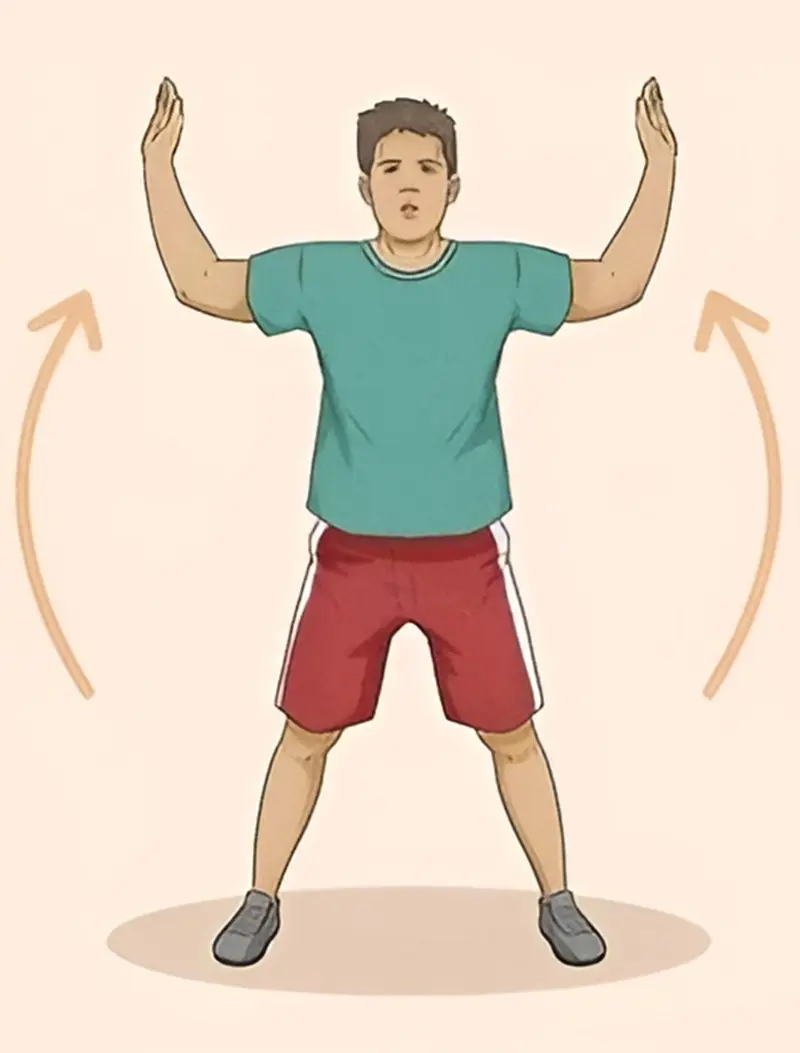
Jumping jacks are found to work your shoulders, calves, and glutes. Adductors and abductors of the inner and outer thigh are also worked while performing jumping jacks. This warm-up exercise can increase your heart rate and promote the neurological system, preparing you for an intense workout or activity.
How To Do It:
- Start by standing upright with your feet together.
- Keep your arms by your sides.
- Simultaneously raise your arms out and perform overhead jumping.
- While jumping, make sure to widen your feet past the shoulders.
- Continuously perform this workout about 10 times.
- You can try reversing the movement but try to stay on the balls of feet throughout the process.
10. High Knees
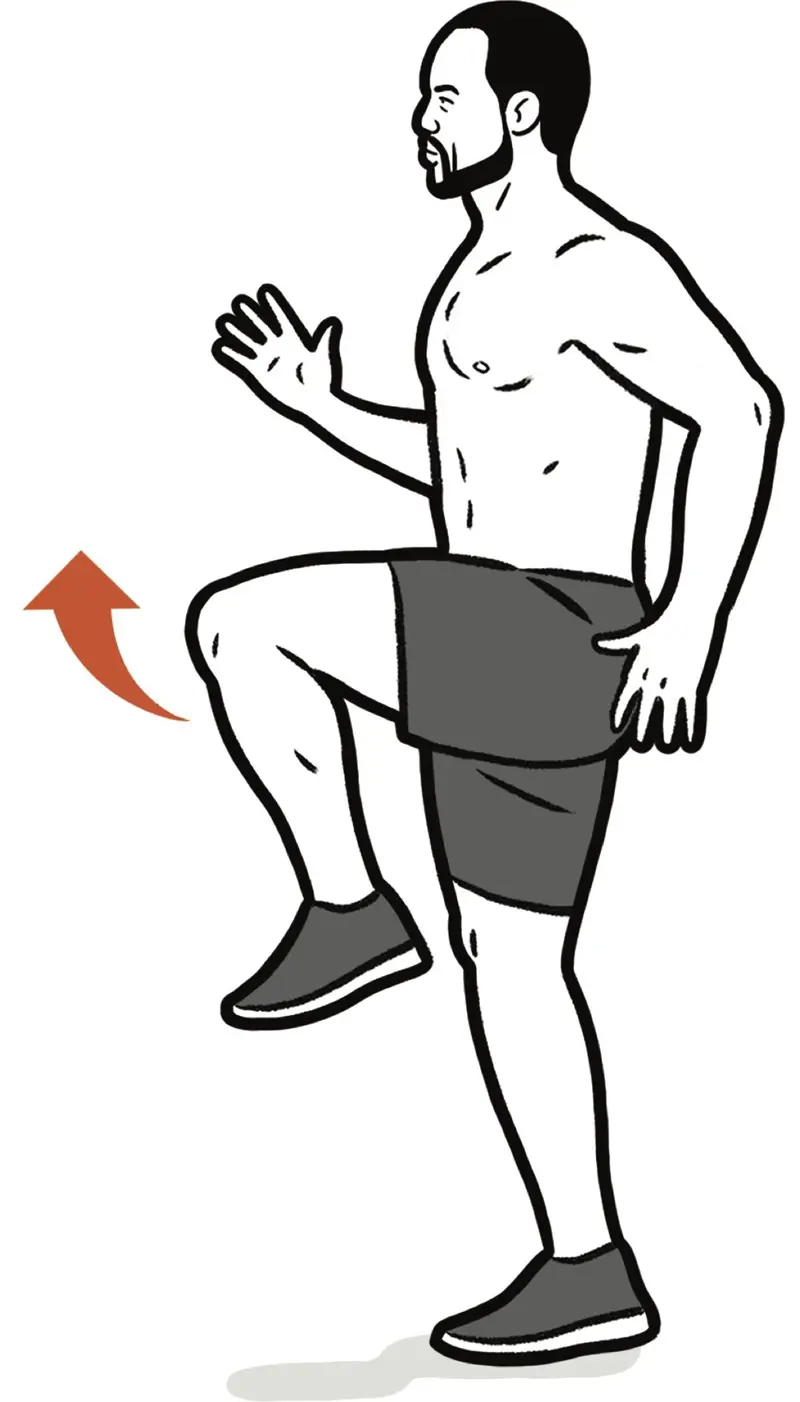
High knees are found to activate your quadriceps, hamstrings, calves, glutes, and hip flexors. This effective dynamic warm-up exercise can significantly increase the core body temperature and heart rate. You will be rewarded with improved muscular endurance, balance, and coordination of the affected muscles.
How To Do It:
- Start by standing on your feet upright.
- Bend your arms at 90 degrees forward with elbows close to the sides.
- Hands should be at the height of your hip in front of your body.
- Bend your right leg and lift the right knee to tap the palm.
- Return the right knee to the floor and quickly repeat the process with your left leg.
- Throughout the movement, try to stay on the balls of the feet.
Benefits of Dynamic Stretching

You should know that dynamic workout exercises involve repetitive movements of body parts that bring the concerned muscles and joints to their full range of movement. They are usually performed as a warm-up routine before carrying out any exercises or participating in any sport.
Many professionals have reported several benefits of dynamic stretching on an individual's body. Some of the well-celebrated benefits are provided below:
- Dynamic stretching may particularly benefit individuals who are into sports involving running and jumping.
- It can help to improve players' sports performance and prevent injuries from occurring, which might be because this stretching has been found to activate the nervous system and muscles.
- Players who conducted dynamic warm-up exercises are more likely to jump higher than others who did static or no stretching at all. This points out the importance of dynamic stretches on the athletes who use power from their lower body.
- Dynamic stretches for warm-ups could potentially increase the flexibility and lower the stiffness in the hamstrings along with improving the range of knee motion.
When To Perform Dynamic Stretching?
You may not notice every improvement all at once after adapting the dynamic stretching. But every effort always gives some positive aspect at the end. Well, in the case of dynamic stretching, it applies the same. You have to continue performing it with sheer determination.
After some period, you will certainly notice improvement in your speed, agility, and acceleration. Your muscles and joints will tighten and become more flexible, removing every stiffness and dullness. But you should be aware of the right time to do dynamic stretching.
1. Before Sports or Athletics
Sports players or athletes will highly benefit from dynamic stretching if they adopt it as a routine warm-up exercise before actually getting involved in their professional activity.
More particularly, if an individual is into running and jumping such as basketball and soccer, dynamic warm up exercises are certain to prepare them both mentally and physically. Make sure to invest your 5-10 minutes of pre-game time on dynamic workouts for the best preparation.
2. Before Weightlifting
Weightlifting is an intense sport. The players will need to use their leg, arms, and shoulder power immensely. If weightlifters invest their pre-event time of about 5-10 minutes in performing dynamic stretching for warm up, they are certain to get rewarded with the essential leg extension power.
If an individual carries out dynamic stretching before lifting any weight, it will improve their performance far more than that of the individual who skips or ignores any stretching techniques.
3. Before Cardiovascular Exercises
Cardio exercises are any activity that elevates your heart rate, breathing, sweating, and blood flow. These outcomes are going to occur whether you're into swimming, jogging, or cycling.
If dynamic exercises are performed before any of the cardiovascular exercises, you can get your muscles warmed up and ready. This may improve your overall performance and reduce the risk of injuries.
Are Dynamic Stretches Dangerous?
Performing exercises based on your ability and strength will never harm you. However, there are some cases to be considered. It has been suggested not to adopt any type of dynamic stretching if you are injured unless your doctor recommends it.
In addition to that, adults over 65 should be highly cautious while performing dynamic workout exercises and consultation is a must for them. Likewise, dynamic stretching is dangerous when performed incorrectly.
Things To Consider
Well, if you are new to dynamic stretching, it would be best for you to start slow and gentle. Make sure to give yourself at least 2-3 sessions of easy dynamic workouts with proper and adequate rest in between.
Never try to push yourself at the beginning and avoid overdoing it. Once you get started, over time you will know your limits and threshold of achieving the result. Keep in mind to proceed lightly and know your body first.
Myths About Dynamic Stretching
1. Stretching Helps Relieve Sore Muscles
Many people believe that performing dynamic stretching will eventually help to reduce the soreness of the muscles. But little do they know, stretching during acute muscle soreness will make it even worse. Intense stretching can further enlarge the tiny tears of your muscle fibers.
Muscle soreness is pretty common when you perform some kind of unfamiliar movements. That is why, stretching after hard work should be performed very cautiously. You need to go easy on stretching after intense hard work.
2. Stretching Reduces Risk of Injury
We have mentioned earlier that stretching may help to prevent injuries. Although there hasn't been any scientific evidence supporting this fact, performing dynamic exercises is only found to prepare your muscles for the upcoming workout demands.
Yes, dynamic stretching increases the blood flow and improves muscular coordination but this won't particularly prevent anyone from the injuries. Injuries are more related to how an individual will perform during the activity.
3. Stretching Should Be Uncomfortable
Doing any activity should never be uncomfortable. Especially if you are performing any stretching activity, discomforts are found to invite other unwanted risks. Yes, if stretching is painful, you are not doing it in the right manner.
You should immediately stop stretching if you feel tension around any part of the body. Make sure to breathe deeply and relax. You should remember stretching is to be done to improve your health!
Recent posts
Exercises
Exercises
12 Simple Rotator Cuff Exercises For Conditioned Shoulders
The rotator cuffs are a key muscle group, crucial for a wide range of arm movements and for stabilizing the shoulder joint. When we’re rotating or lifting our arms, the rotator cuffs are working hard. Weakness in these muscles can lead to...
Exercises
12 Amazing Full Body Dumbbell Workout And Exercises
If you're new to fitness, putting together a full-body workout can feel overwhelming. A solid training program targets strength, endurance, flexibility, and balance while working all the major muscle groups. Luckily, dumbbells are versatile tools tha...
Exercises
11 Effective Jawline Exercises To Try For A Chiseled Face
Jawline exercises can lead to changes in the shape of the face, resulting in fuller cheeks and a more youthful appearance. Exercising the neck, chin, jaw, and other facial muscles leads to sharper cheekbones and a prominent jawline. Improving your ja...
Exercises
15 Best Exercises For Waist To Get A Slimmer Midsection
Smaller waist is a common goal for many women, but it requires a mix of exercise, persistence, and a healthy lifestyle. Waist-slimming workouts will tone and shape your midsection while also improving your overall posture and stability. From easy twi...
Exercises
16 Body Weight Leg Exercises To Strengthen Your Lower Body
Bodyweight training is very accessible, popular, and requires little or no equipment at all. With bodyweight exercises, you can target your lower body muscles in different ways to help build stronger legs. Before jumping into weighted movements, thes...
Exercises
12 Achilles Tendon Stretches To Tone Heel And Calf Muscles
The Achilles tendon runs down the back of the lower leg, connecting the heel bone to the calf muscle. It helps lift the heel off the ground while walking. If you suffer from Achilles tendonitis, gently working out the inflamed tendons can aid in quic...
